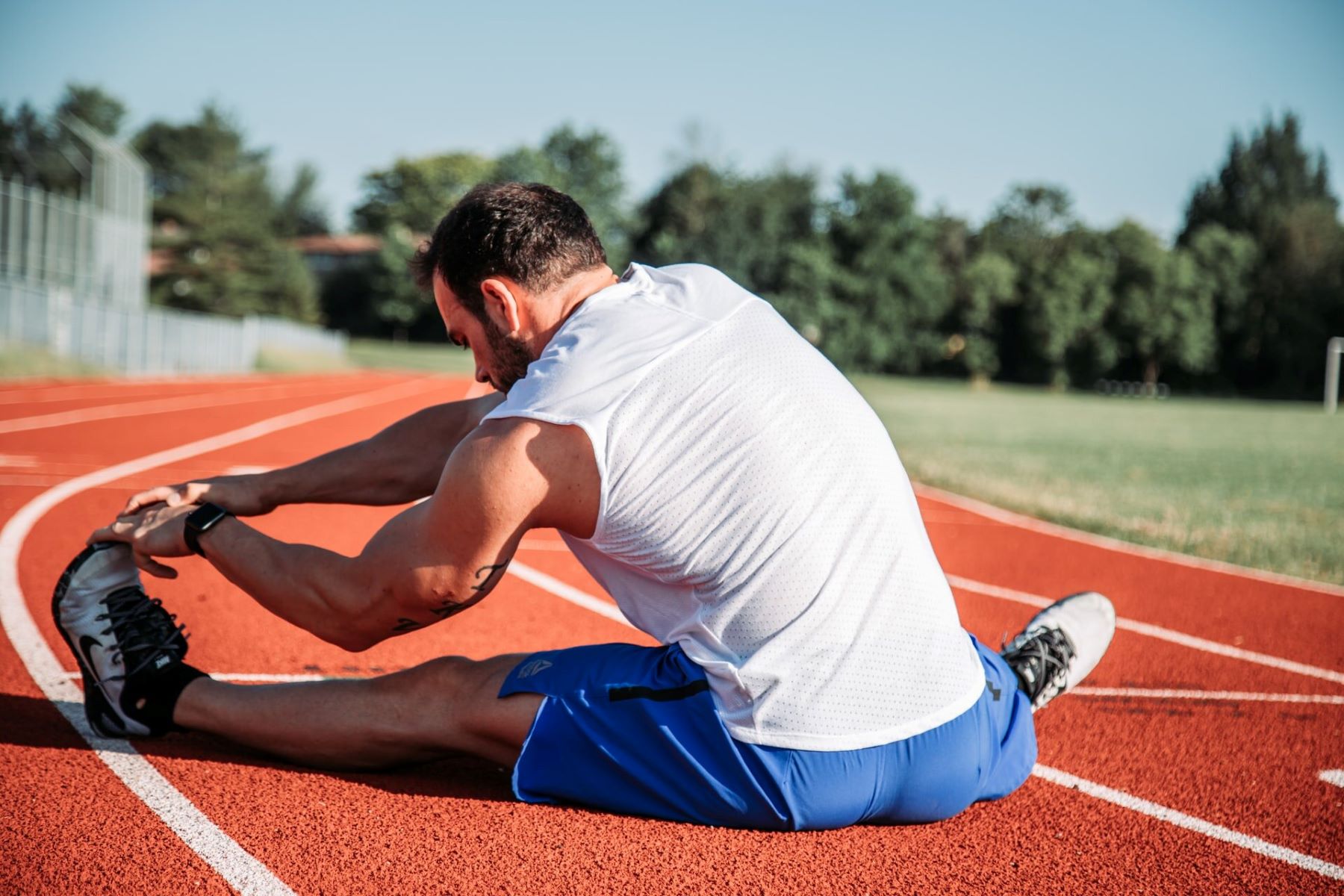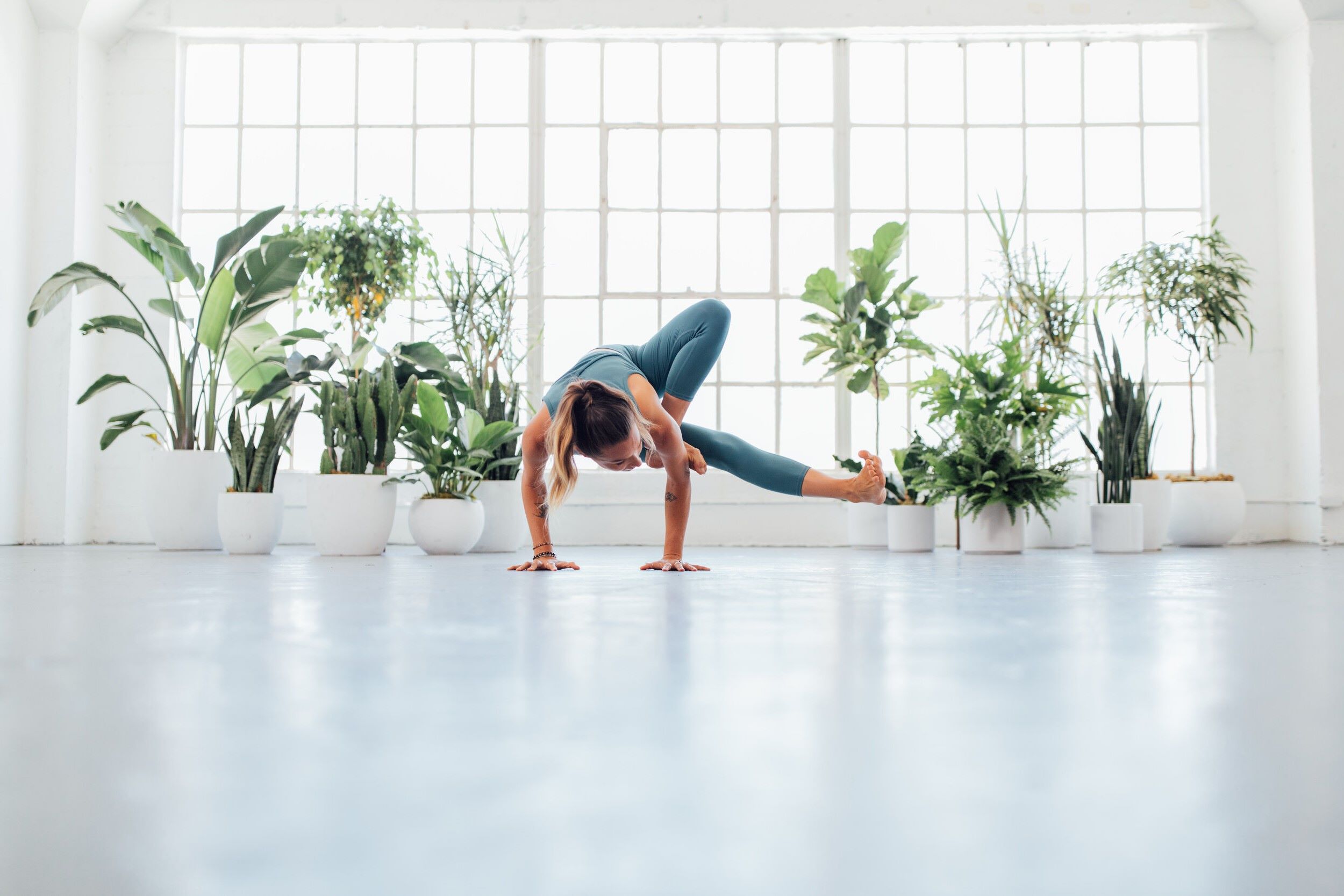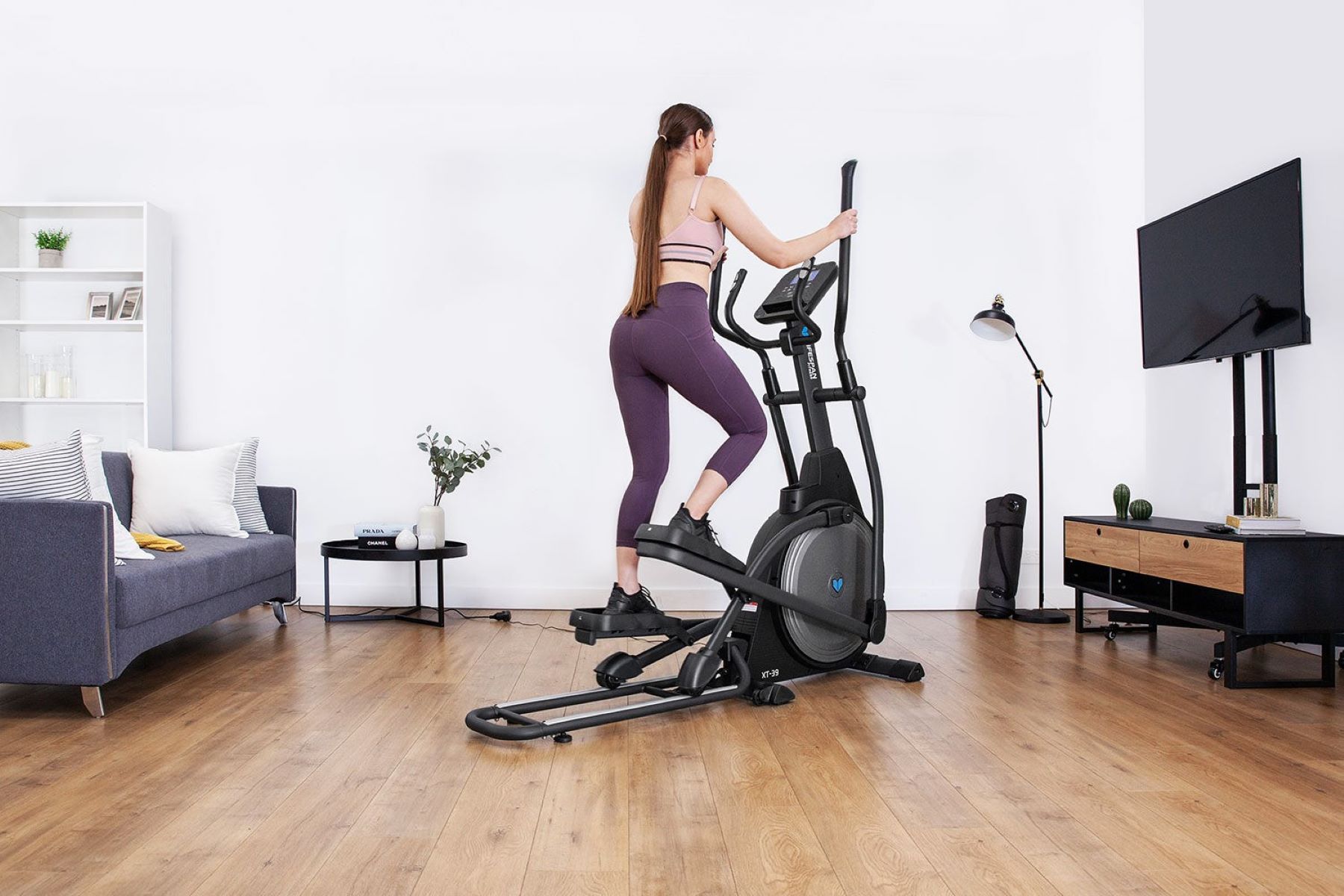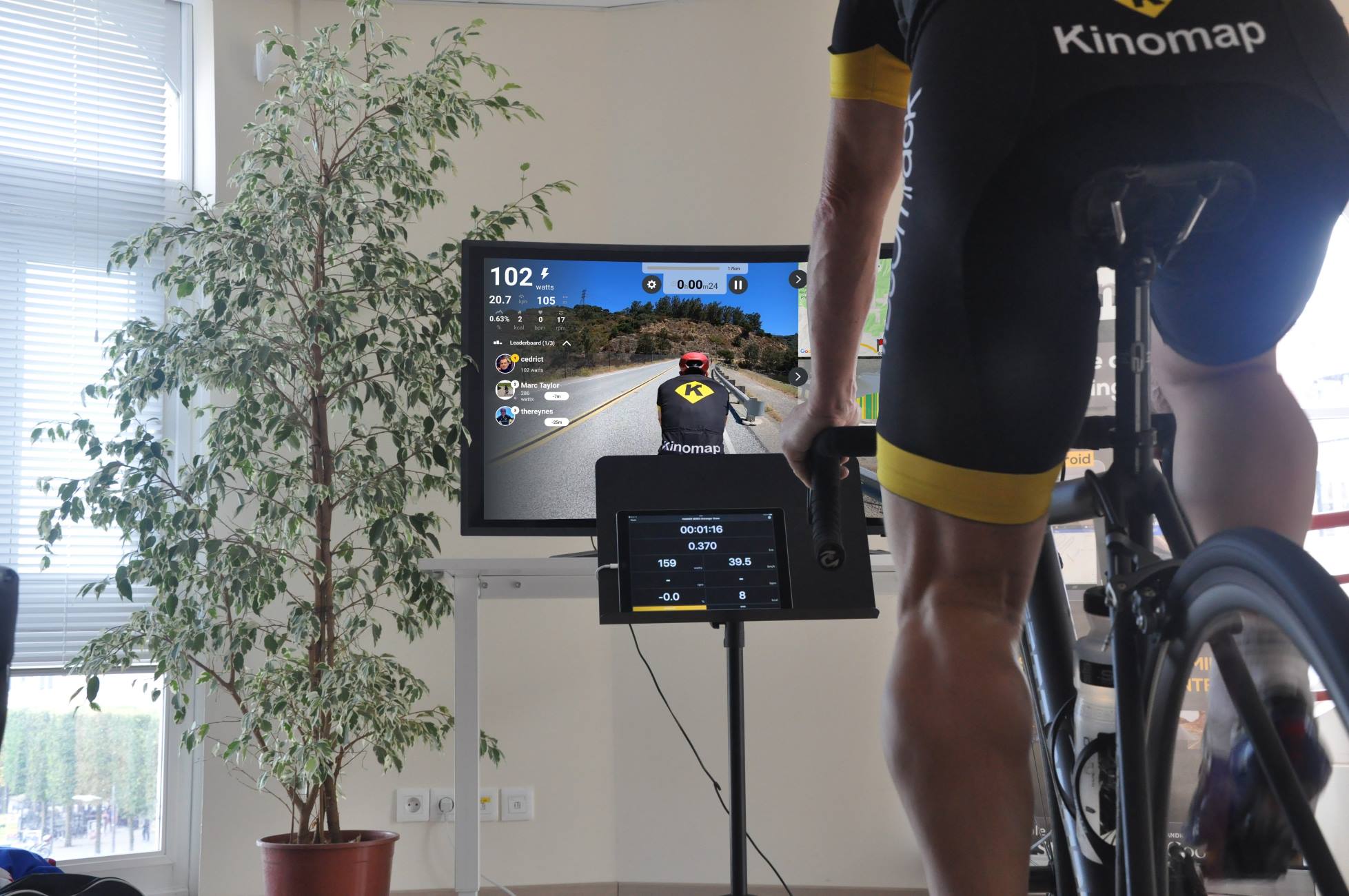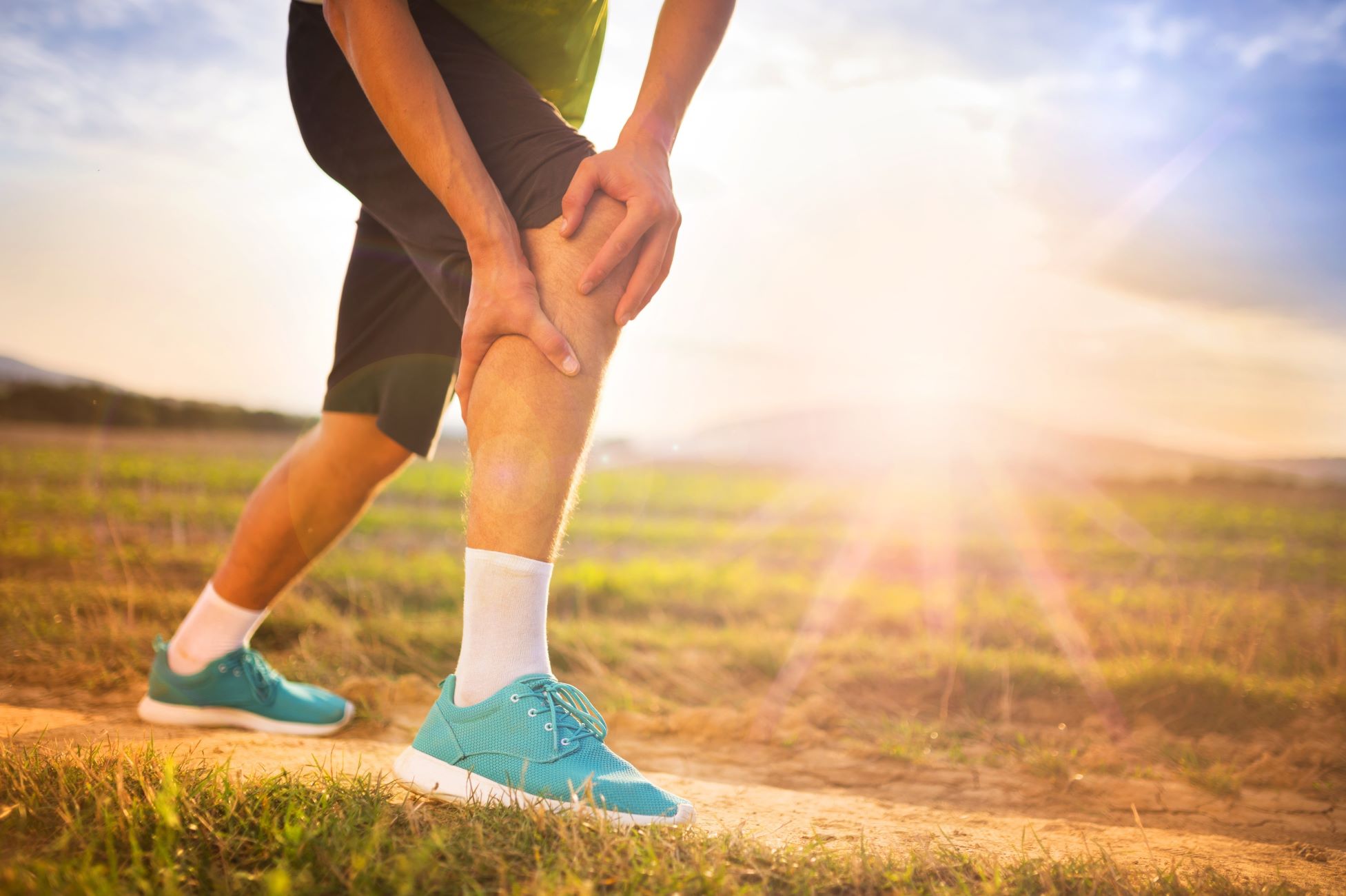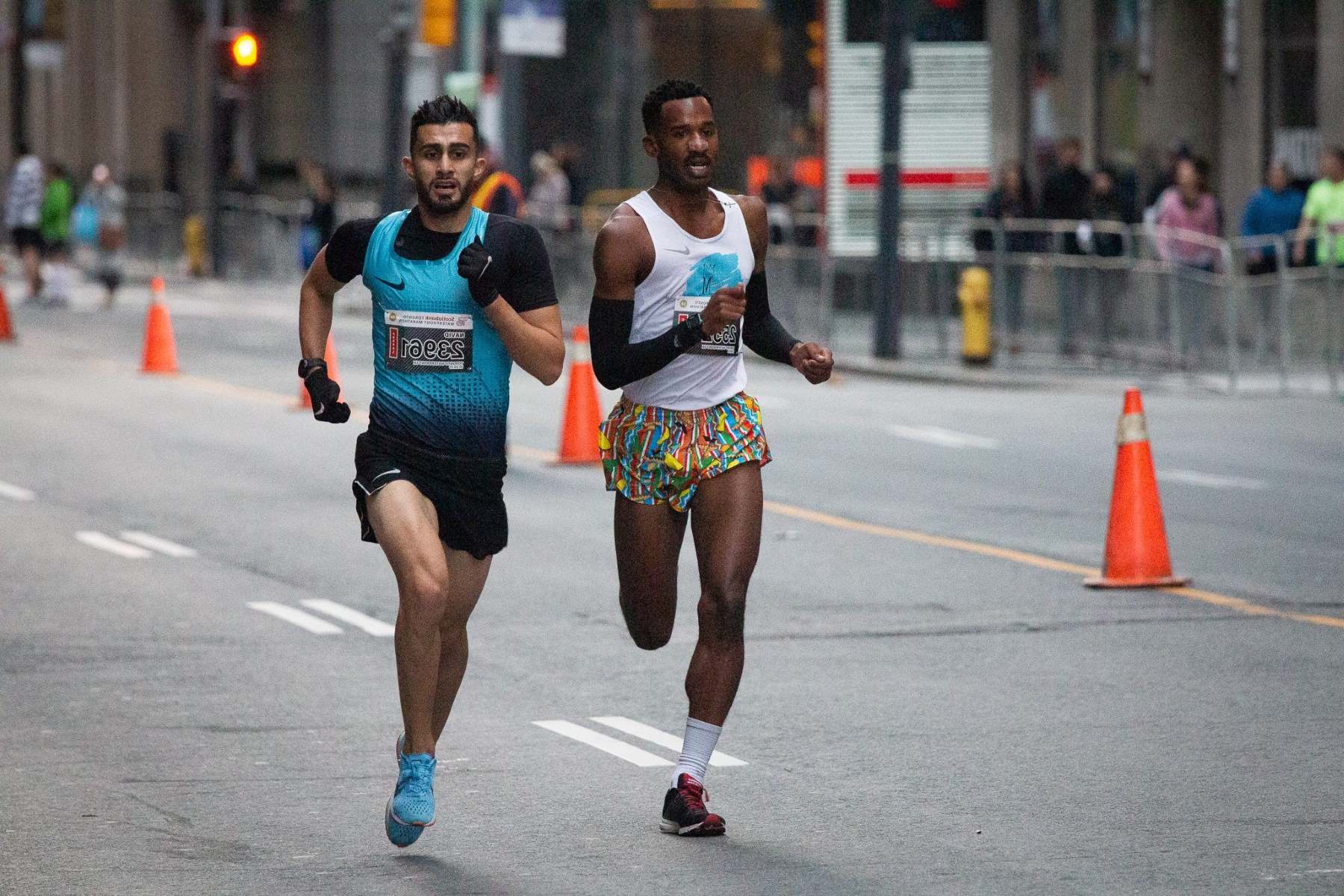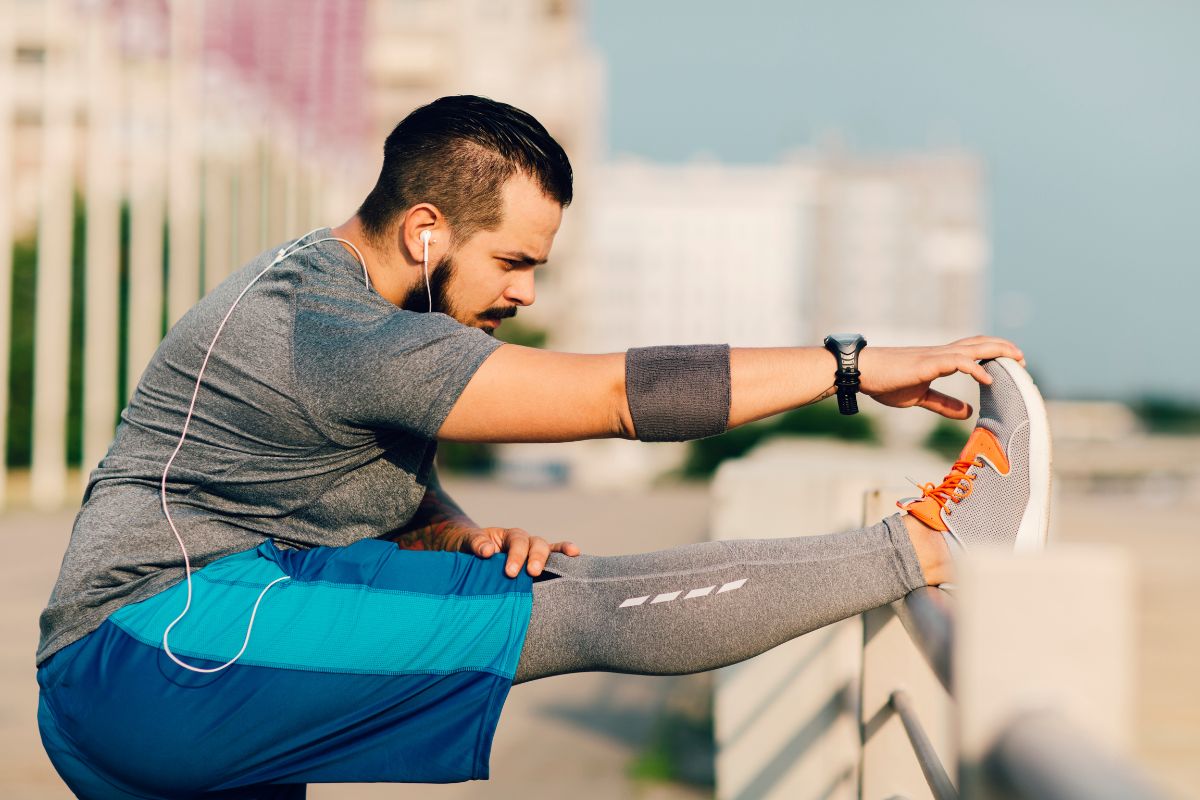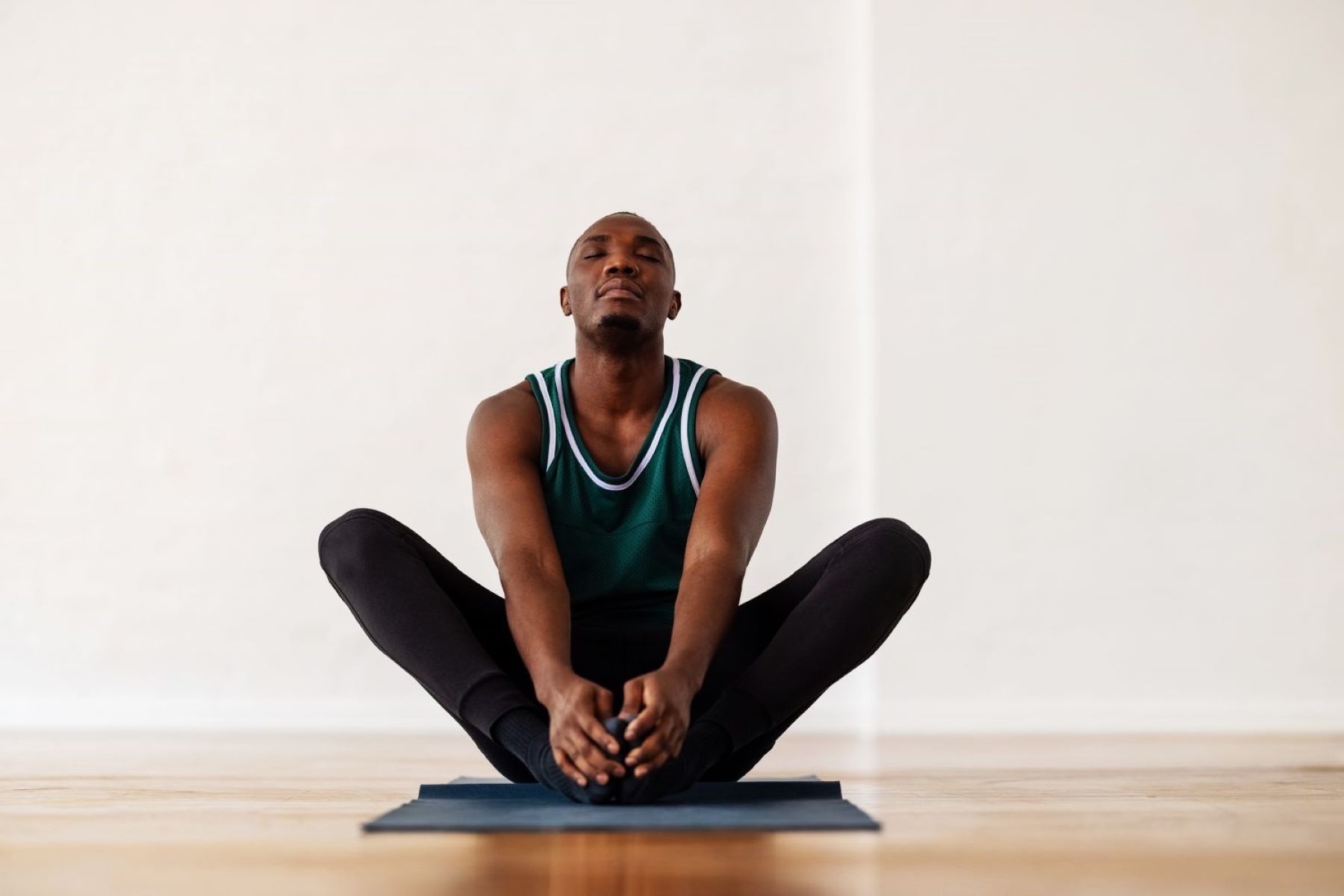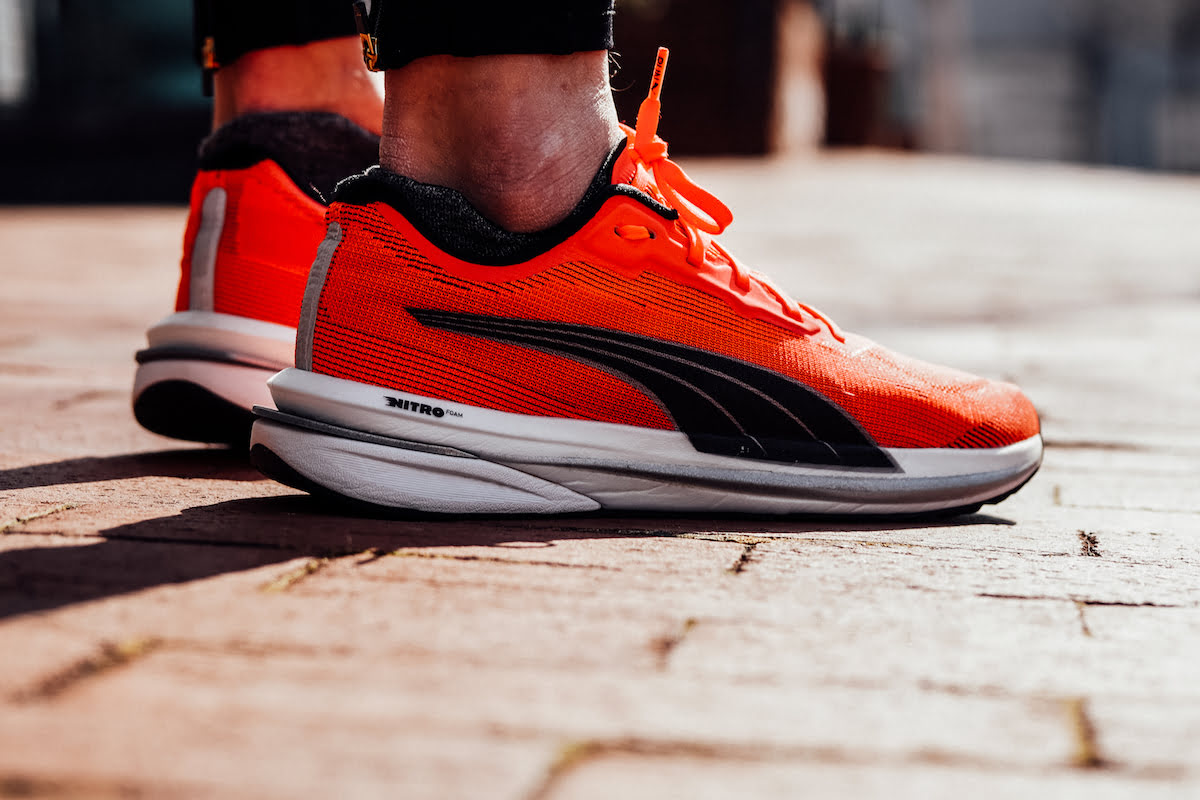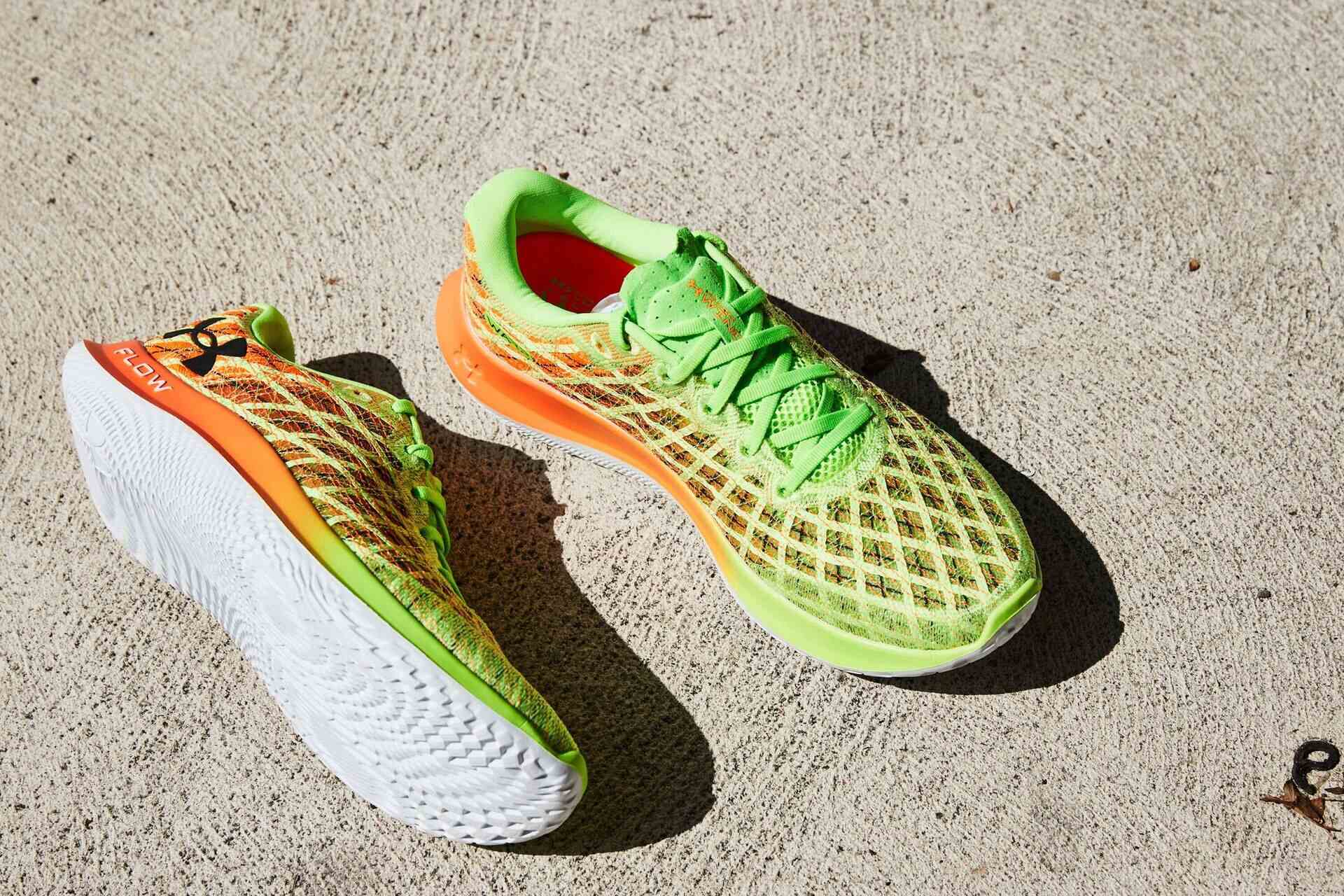Home>Training & Techniques>Cross-Training>Quick Yoga Poses For Busy Runners
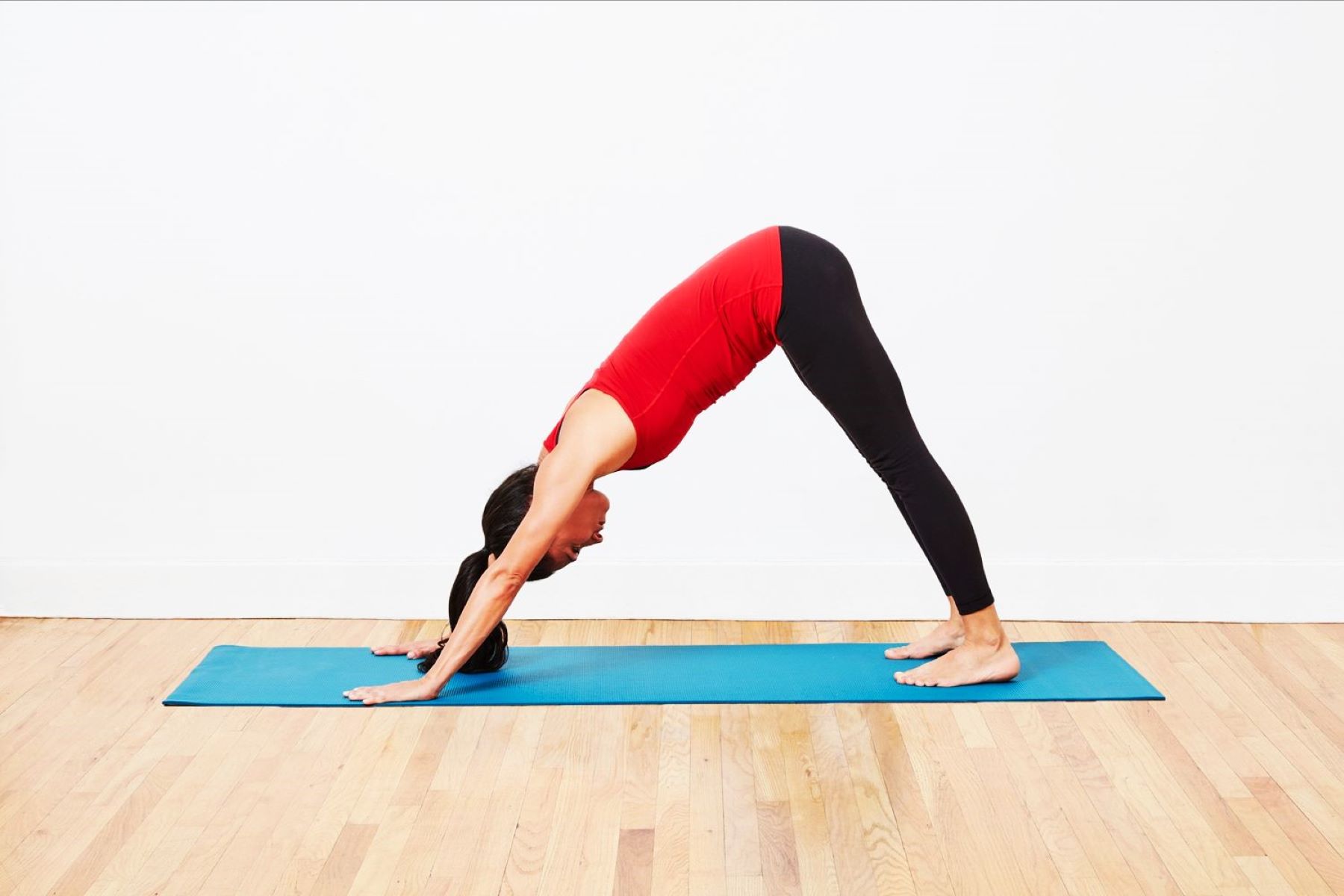

Cross-Training
Quick Yoga Poses For Busy Runners
Published: February 20, 2024
Incorporate quick yoga poses into your cross-training routine to support your running regimen. Enhance flexibility and prevent injuries with these efficient exercises for busy runners.
(Many of the links in this article redirect to a specific reviewed product. Your purchase of these products through affiliate links helps to generate commission for Therunningadvisor.com, at no extra cost. Learn more)
Table of Contents
Introduction
As a runner, you're no stranger to the exhilarating rush of wind against your face and the rhythmic pounding of your feet against the pavement. The thrill of pushing your limits and conquering new distances is undoubtedly invigorating. However, the repetitive nature of running can take a toll on your body, leading to tight muscles, imbalances, and potential injuries. This is where yoga comes in as a game-changer for runners.
Yoga offers a holistic approach to fitness, focusing on flexibility, strength, and mental clarity. Incorporating yoga into your routine can help counterbalance the physical demands of running, leading to improved performance, faster recovery, and a reduced risk of injury. In this article, we'll explore a selection of quick and effective yoga poses specifically tailored to meet the needs of busy runners. Whether you're a seasoned marathoner or a casual jogger, integrating these poses into your regimen can make a world of difference in your overall well-being and running experience.
Let's delve into the transformative benefits of yoga for runners and discover how a few simple poses can elevate your running game to new heights.
Benefits of Yoga for Runners
Yoga serves as a powerful ally for runners, offering a myriad of physical and mental benefits that complement and enhance their training. Here's a closer look at how integrating yoga into a runner's routine can yield transformative results:
-
Enhanced Flexibility: Running primarily engages certain muscle groups, leading to tightness and reduced flexibility. Yoga poses target these areas, such as the hamstrings, hips, and calves, promoting increased flexibility and range of motion. This, in turn, can improve running efficiency and reduce the risk of strains and injuries.
-
Improved Strength and Balance: While running predominantly emphasizes the lower body, yoga engages various muscle groups, including the core, arms, and stabilizing muscles. This holistic approach helps runners develop overall strength and balance, leading to better posture, reduced muscle imbalances, and enhanced stability during runs.
-
Injury Prevention and Recovery: The repetitive impact of running can strain the body, leading to overuse injuries. Yoga aids in correcting imbalances, strengthening supportive muscles, and promoting proper alignment, thereby reducing the likelihood of injuries. Additionally, the gentle stretching and relaxation techniques in yoga can expedite post-run recovery, alleviating muscle soreness and promoting faster healing.
-
Mind-Body Connection: Yoga emphasizes mindfulness, deep breathing, and mental focus, which can be invaluable for runners. By cultivating a strong mind-body connection, runners can enhance their mental resilience, manage stress, and stay attuned to their body's signals, leading to improved performance and a more enjoyable running experience.
-
Stress Reduction and Relaxation: The demands of a rigorous running regimen can take a toll on both the body and mind. Yoga provides a sanctuary for relaxation, stress reduction, and rejuvenation. The practice of yoga can help runners unwind, release tension, and restore balance, ultimately contributing to better overall well-being.
By embracing the holistic benefits of yoga, runners can optimize their physical and mental conditioning, leading to improved performance, reduced risk of injuries, and a more sustainable and fulfilling running journey. Now, let's explore a selection of quick and effective yoga poses tailored to meet the needs of busy runners.
Downward Facing Dog
Downward Facing Dog, or Adho Mukha Svanasana in Sanskrit, is a quintessential yoga pose that offers a multitude of benefits for runners. This iconic pose engages the entire body, making it an invaluable addition to a runner's routine. To assume the Downward Facing Dog position, start on your hands and knees, align your wrists under your shoulders and your knees under your hips, then lift your hips toward the ceiling, forming an inverted V shape with your body. Here's why this pose is a game-changer for runners:
Physical Benefits
- Full Body Stretch: Downward Facing Dog provides a deep stretch for the entire back body, including the calves, hamstrings, and back muscles. This elongation helps alleviate tightness accumulated from running, promoting improved flexibility and range of motion.
- Strengthening: This pose engages the arms, shoulders, and core, promoting upper body strength and stability. For runners, a strong upper body is crucial for maintaining proper form and posture, especially during long-distance runs.
- Alignment and Posture: Downward Facing Dog encourages proper spinal alignment, which is essential for runners to prevent imbalances and maintain a strong, stable posture during their runs.
Mental and Emotional Benefits
- Stress Relief: The inverted nature of this pose encourages deep breathing and relaxation, helping to alleviate mental stress and tension. Runners can use this pose as a moment of respite, allowing them to regroup and refocus during their practice.
- Mind-Body Connection: Practicing Downward Facing Dog cultivates a strong mind-body connection, fostering awareness of the body's sensations and promoting mental clarity. This heightened awareness can be invaluable for runners, helping them tune into their body's needs and signals during their runs.
Incorporating Downward Facing Dog into a runner's routine, even for just a few minutes each day, can yield remarkable benefits. Whether used as a dynamic stretch before a run or as a restorative posture after a long workout, this versatile pose has the potential to enhance a runner's overall well-being and performance.
Standing Forward Fold
Standing Forward Fold, or Uttanasana in Sanskrit, is a rejuvenating yoga pose that holds immense value for runners seeking to enhance their flexibility and release tension accumulated from their runs. To assume the Standing Forward Fold position, stand tall with your feet hip-width apart, then hinge at the hips to fold forward, allowing your upper body to drape over your legs. Here's a detailed exploration of the physical, mental, and emotional benefits of this revitalizing pose for runners.
Physical Benefits
Hamstring and Calf Stretch
Standing Forward Fold provides a deep stretch for the hamstrings and calves, areas that often bear the brunt of the impact during running. By lengthening these muscles, runners can alleviate tightness and improve their overall flexibility, leading to a more fluid and efficient running stride.
Spinal Decompression
The gentle traction on the spine in Standing Forward Fold can help alleviate compression and tension in the back, offering relief to runners who may experience discomfort or tightness in this area after their runs.
Improved Circulation
As the head hangs below the heart in this pose, it can promote blood flow to the brain, providing a refreshing boost of oxygen and nutrients. Enhanced circulation can aid in post-run recovery, helping to alleviate muscle soreness and promote healing.
Mental and Emotional Benefits
Stress Reduction
The calming nature of Standing Forward Fold can help runners release mental and emotional tension, providing a moment of tranquility amidst the demands of their training. The gentle inversion can also have a soothing effect on the nervous system, promoting relaxation and a sense of calm.
Mindfulness and Centering
Practicing Standing Forward Fold encourages runners to turn their focus inward, fostering a sense of mindfulness and introspection. This can be particularly valuable for runners seeking mental clarity and a break from the external distractions of their training.
Incorporating Standing Forward Fold into a runner's post-run routine can serve as a rejuvenating practice, offering a moment of reprieve and restoration. Whether performed as part of a dynamic yoga sequence or as a standalone posture, this gentle yet powerful pose has the potential to enhance a runner's overall well-being, flexibility, and mental resilience.
Low Lunge
Low Lunge, also known as Anjaneyasana in Sanskrit, is a revitalizing yoga pose that holds immense value for runners seeking to enhance their flexibility, release tension, and cultivate strength in their lower body. To assume the Low Lunge position, start from a standing position, step one foot back, and lower the back knee to the ground while keeping the front knee bent at a 90-degree angle. Here's a detailed exploration of the physical, mental, and emotional benefits of this empowering pose for runners.
Physical Benefits
Hip Flexor Stretch
Low Lunge offers a deep stretch for the hip flexors, an area that can become tight and restricted from the repetitive motion of running. By opening up the hip flexors, runners can alleviate stiffness and improve their range of motion, leading to a more fluid and efficient running stride.
Quadriceps and Hamstring Release
The position of the front leg in Low Lunge provides a gentle stretch for the quadriceps and hamstrings, promoting flexibility and reducing tightness in these crucial muscle groups. This release can contribute to improved running performance and reduced risk of strain or injury.
Core Activation
Maintaining stability and balance in Low Lunge requires engagement of the core muscles, leading to strengthened abdominal muscles and improved overall stability. A strong core is essential for runners to maintain proper form and posture, especially during long-distance runs.
Mental and Emotional Benefits
Grounding and Stability
The grounded nature of Low Lunge can foster a sense of stability and rootedness, providing runners with a moment of grounding amidst the dynamic and often demanding nature of their training. This can be particularly valuable for runners seeking to center themselves and find balance in their practice.
Emotional Release
The deep stretch and opening offered by Low Lunge can serve as a catalyst for emotional release, allowing runners to let go of tension and stress stored in the body. This can create space for emotional healing and provide a sense of lightness and freedom.
Incorporating Low Lunge into a runner's routine, whether as part of a dynamic yoga sequence or as a standalone posture, can serve as a transformative practice, offering a moment of renewal and empowerment. This empowering pose has the potential to enhance a runner's overall well-being, flexibility, and mental resilience, ultimately contributing to a more sustainable and fulfilling running journey.
Seated Forward Bend
Seated Forward Bend, also known as Paschimottanasana in Sanskrit, is a rejuvenating yoga pose that offers a multitude of benefits for runners. This gentle yet powerful posture targets the hamstrings, lower back, and entire posterior chain, making it an invaluable addition to a runner's routine. To assume the Seated Forward Bend position, sit on the floor with your legs extended in front of you, then hinge at the hips to fold forward, reaching for your feet or shins while keeping your spine lengthened. Here's a detailed exploration of the physical, mental, and emotional benefits of this revitalizing pose for runners.
Physical Benefits
Hamstring and Lower Back Release
Seated Forward Bend provides a deep stretch for the hamstrings and lower back, areas that often bear the brunt of the impact during running. By lengthening these muscles, runners can alleviate tightness and improve their overall flexibility, leading to a more fluid and efficient running stride.
Decompression and Relaxation
The forward folding nature of this pose offers a gentle decompression for the spine, providing relief to runners who may experience tightness or discomfort in the lower back after their runs. The elongation of the spine in Seated Forward Bend can also promote relaxation and release tension accumulated from the demands of running.
Improved Posture and Alignment
Regular practice of Seated Forward Bend can contribute to improved posture and spinal alignment, which is essential for runners to prevent imbalances and maintain a strong, stable posture during their runs. By lengthening the spine and promoting proper alignment, runners can reduce the risk of postural imbalances and related discomfort.
Mental and Emotional Benefits
Stress Reduction and Calm
The calming nature of Seated Forward Bend can help runners release mental and emotional tension, providing a moment of tranquility amidst the demands of their training. The forward folding motion can have a soothing effect on the nervous system, promoting relaxation and a sense of calm.
Introspection and Mindfulness
Practicing Seated Forward Bend encourages runners to turn their focus inward, fostering a sense of mindfulness and introspection. This can be particularly valuable for runners seeking mental clarity and a break from the external distractions of their training.
Incorporating Seated Forward Bend into a runner's post-run routine can serve as a rejuvenating practice, offering a moment of reprieve and restoration. Whether performed as part of a dynamic yoga sequence or as a standalone posture, this gentle yet powerful pose has the potential to enhance a runner's overall well-being, flexibility, and mental resilience, ultimately contributing to a more sustainable and fulfilling running journey.
Pigeon Pose
Pigeon Pose, or Eka Pada Rajakapotasana in Sanskrit, is a transformative yoga posture that offers a myriad of benefits for runners seeking to alleviate tightness in the hips, improve flexibility, and release tension accumulated from their runs. This deeply restorative pose targets the hip flexors, glutes, and outer thighs, making it an invaluable addition to a runner's routine.
To assume the Pigeon Pose, begin in a tabletop position, then slide one knee forward toward the wrist on the same side, extending the other leg straight behind you. Lower the back leg to the ground, ensuring the hips are squared and the front foot is positioned in line with the opposite hip. Here's a detailed exploration of the physical, mental, and emotional benefits of this rejuvenating pose for runners.
Physical Benefits
Hip Flexor and Glute Release
Pigeon Pose provides a deep stretch for the hip flexors and glutes, areas that can become tight and restricted from the repetitive motion of running. By opening up these muscles, runners can alleviate stiffness and improve their range of motion, leading to a more fluid and efficient running stride.
Outer Thigh Stretch
The external rotation of the front leg in Pigeon Pose offers a gentle stretch for the outer thigh and hip, promoting flexibility and reducing tightness in these crucial areas. This release can contribute to improved running performance and reduced risk of strain or injury.
Hip Alignment and Stability
Maintaining proper alignment and stability in Pigeon Pose requires engagement of the core and supportive muscles around the hips. This can lead to improved hip stability and balanced muscle development, essential for maintaining proper form and posture during runs.
Mental and Emotional Benefits
Emotional Release and Relaxation
The deep stretch and opening offered by Pigeon Pose can serve as a catalyst for emotional release, allowing runners to let go of tension and stress stored in the hips and pelvis. This can create space for emotional healing and provide a sense of lightness and freedom.
Mindfulness and Surrender
Practicing Pigeon Pose encourages runners to cultivate a sense of mindfulness and surrender, allowing them to release resistance and find ease in discomfort. This can be particularly valuable for runners seeking mental resilience and a break from the intensity of their training.
Incorporating Pigeon Pose into a runner's routine, whether as part of a dynamic yoga sequence or as a standalone posture, can serve as a transformative practice, offering a moment of renewal and empowerment. This empowering pose has the potential to enhance a runner's overall well-being, flexibility, and mental resilience, ultimately contributing to a more sustainable and fulfilling running journey.
Conclusion
In conclusion, the fusion of yoga and running presents a harmonious synergy that can elevate a runner's physical and mental well-being. The incorporation of yoga poses tailored to address the specific needs of runners offers a transformative approach to enhancing flexibility, strength, and overall performance. From the revitalizing Downward Facing Dog to the restorative Pigeon Pose, each yoga posture serves as a valuable tool in a runner's arsenal, providing a pathway to improved mobility, injury prevention, and mental resilience.
By embracing the holistic benefits of yoga, runners can cultivate a balanced and sustainable approach to their training. The physical advantages, including enhanced flexibility, improved strength, and injury prevention, are complemented by the mental and emotional benefits of stress reduction, mindfulness, and emotional release. This holistic approach not only optimizes a runner's physical conditioning but also nurtures their mental fortitude, creating a resilient foundation for their running journey.
Furthermore, the integration of yoga poses into a runner's routine offers a versatile and accessible means of cross-training. Whether utilized as dynamic pre-run stretches, post-run recovery practices, or standalone sessions dedicated to restoration and rejuvenation, these yoga poses can seamlessly complement a runner's training regimen. The adaptability and simplicity of these poses make them well-suited for busy runners, offering a convenient and effective means of enhancing their overall well-being.
In essence, the marriage of yoga and running transcends the realms of physical fitness, extending into the realms of mental clarity, emotional balance, and holistic well-being. As runners embrace the transformative power of yoga, they embark on a journey of self-discovery, resilience, and sustainable performance. Through the seamless integration of yoga poses into their training, runners can unlock a new dimension of potential, where strength, flexibility, and mindfulness converge to propel them toward their running goals with grace and resilience.

